Aim
This study assessed the effects of eight different environmental enrichment items on the behaviour of a captive population of cinereous vultures and determined whether this may have a positive impact on their welfare.
Neophobia
A possible reason for there only being two successful interactions with the enrichment items may be due to neophobia; the fear of novel and unfamiliar objects. Fear may be a natural behaviour in vultures due to the risks associated with scavenging behaviours. At the beginning of the enrichment period, the vultures expressed neophobia by staying up in the trees & perches, avoiding the ground and feeding. Over time, possibly due to habituation occurring from the frequent rotation and long-term use of the enrichment items, the vultures would fly down from the perches and stand on the ground more frequently, eat, interact socially, and explore more of the enclosure.
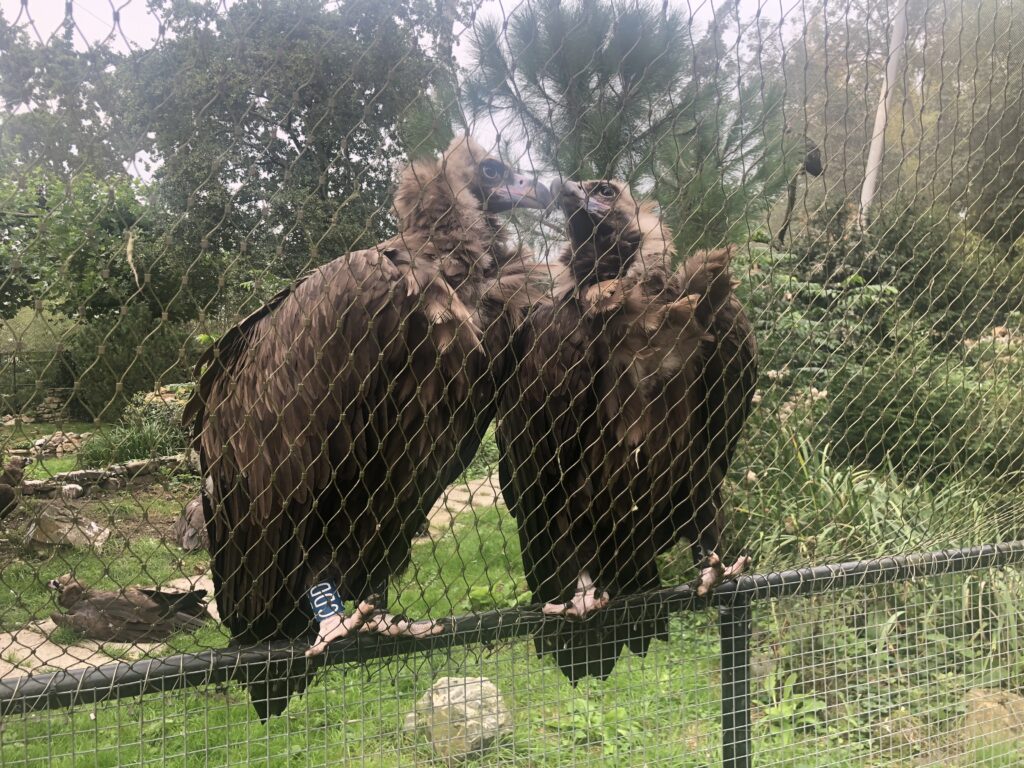
The large carcass enrichment
Feeding increased during the large carcass enrichment, nearly doubling in frequency compared to the baseline period. Increase in the vultures’ overall activity and handling time. Larger carcasses require more handling due to the thicker skin and bigger pieces of meat to tear. The cinereous vultures even returned to the large carcass on the second day and continue spending high amounts of their time feeding to finish the carcass.
Agonistic and affiliative social behaviours increased in frequency during the large carcass enrichment. The captive vultures displayed more aggressive walks and had higher levels of chasing, conflicts, fleeing, kicking and pecking compared to the baseline period.
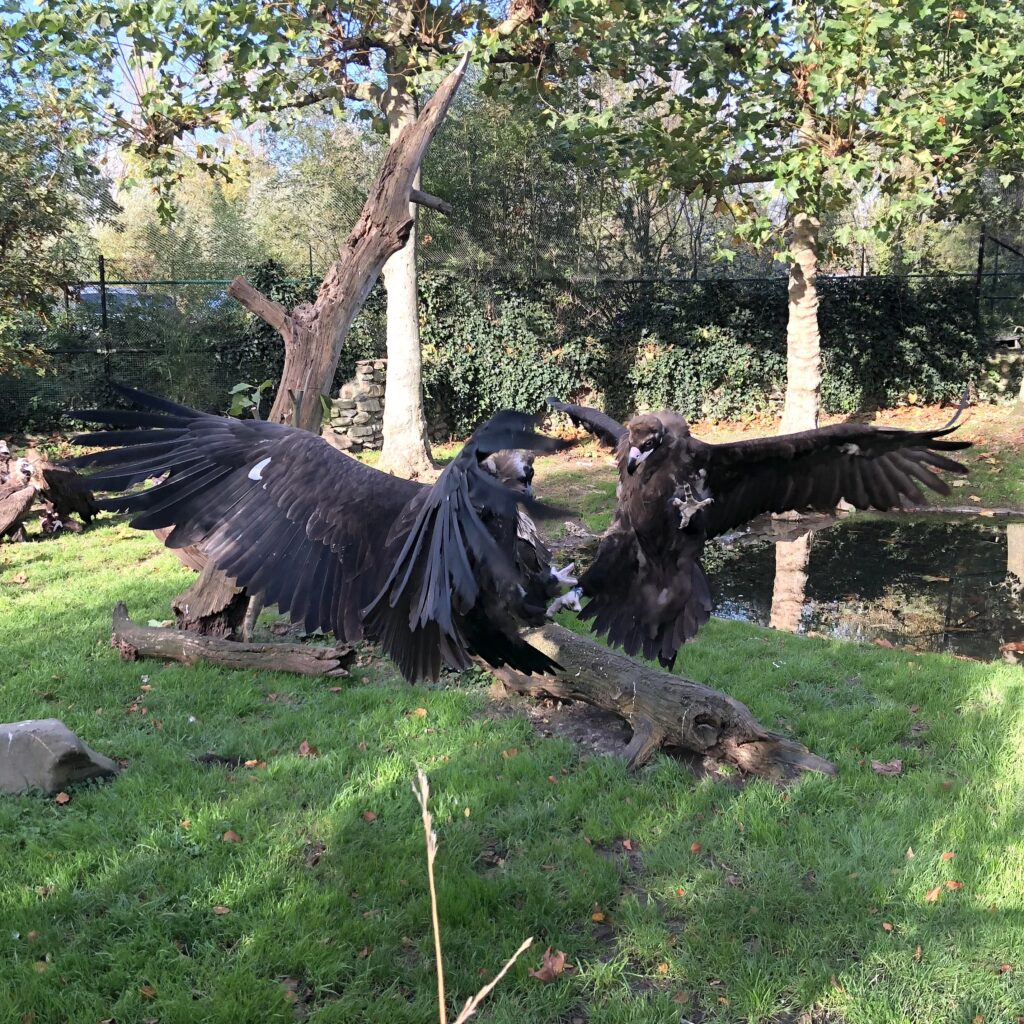
They also greeted more frequently during the large carcass enrichment. Gatherings around carcasses may function as a meeting place for social purposes and interactions. Observing captive vultures during gatherings around large carcasses may help detect possible breeding pairs and benefit breeding programmes in ensuring successful mating and reintroduction of captive-born offspring into the wild to help boost threatened wild populations.
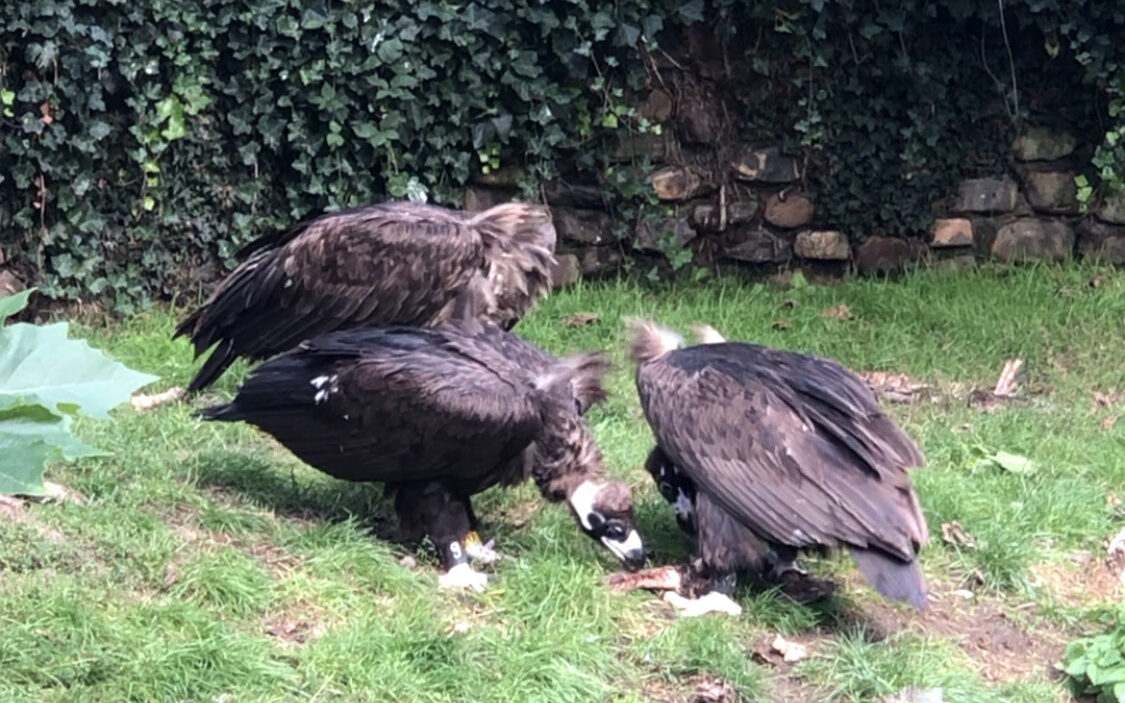
The cinereous vulture is known to be more dominant and aggressive compared to other European vulture species. Their larger size, stronger beaks, and talons give cinereous vultures a competitive advantage over other vulture species. This competitive advantage is especially useful when competing for carcasses. This may explain the increased levels of agonistic behaviours during the large carcass enrichment, allowing the vulture to behave more naturally dominant and aggressive.
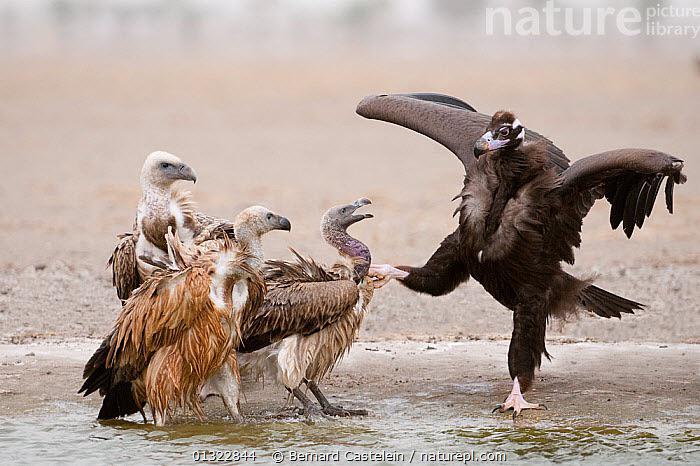
The mirror enrichment
The individual that interacted with the mirror expressed curiosity and exploratory behaviours, as well as various natural behaviours like greeting, pecking at its reflection and aggression towards its reflection. It is possible that birds may consider their own reflection as a rival as they do not realize it is their own reflection, which can be regarded as stressful. Additionally, it is also possible that since the vultures never saw mirrors before this study, it can cause stress due to the novelty of the mirror.
With repeated exposure and a longer habituation period, it is possible that the cinereous vultures may become more familiar with their reflection and interact with the mirror in an enriching manner. Overall, further research will be needed to understand the impact of mirror enrichment on vultures, as there are no previous studies related to the use of this enrichment items with vultures.
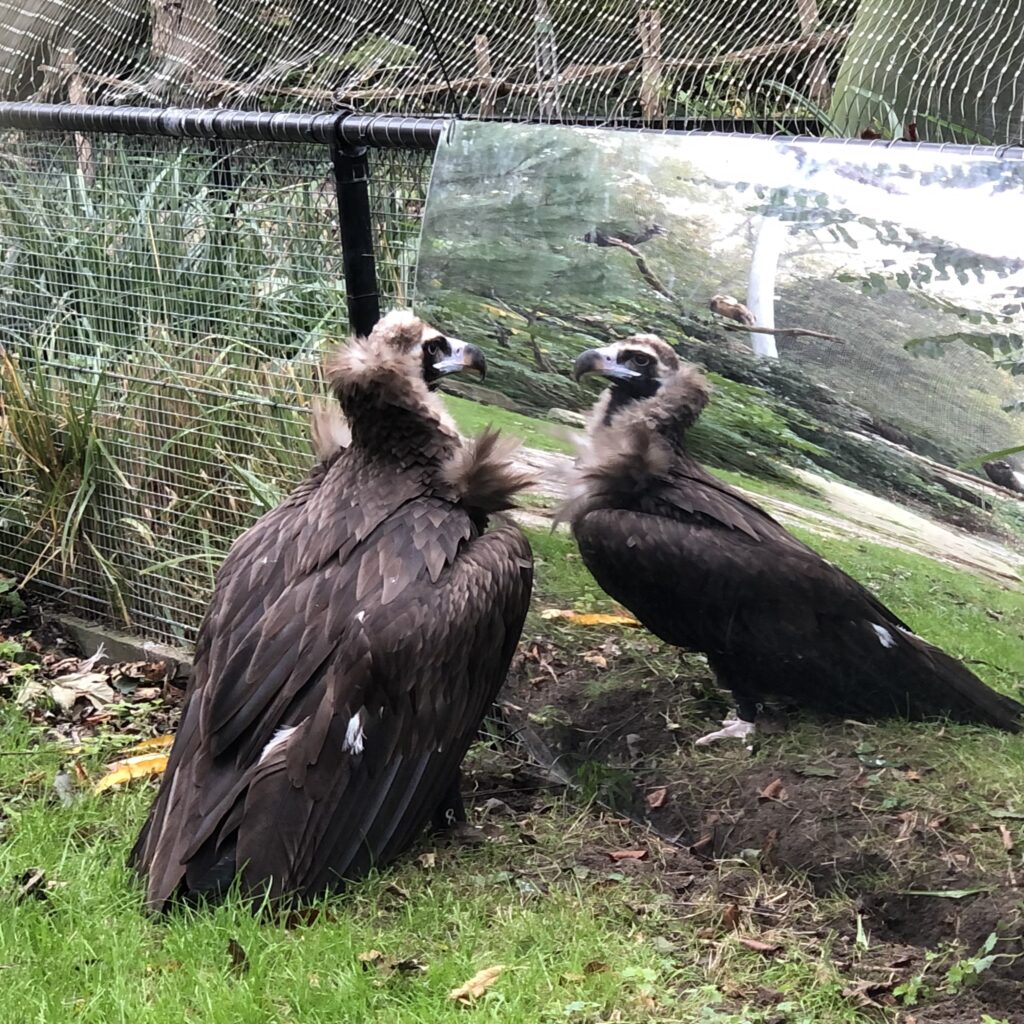
Abnormal repetitive behaviours
Abnormal repetitive behaviours are patterns of behaviour that are repetitive and have no apparent function. These behaviours may be an indication of poor welfare, as they are often associated with stress, boredom, and frustration. The current study vultures expressed wire-chewing, an abnormal behaviour that occurs when the vulture repeatedly gnaws and pulls on the wires of the enclosure. They perched on the wired-mesh of the enclosure and continuously pecked, pulled and gnawed the wire with their beaks and talons for up to 15-20 minute intervals. This behaviour decreased with the use of enrichment and, therefore, may be useful for reducing the incidence of these abnormal repetitive behaviours.
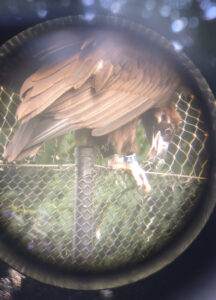
Conclusions
A. The vultures did express neophobia towards most enrichment items; However, the frequent use and rotation of enrichment items may have reduced the vultures’ neophobia due to habituation.
B. During the large carcass enrichment, the vultures behaved more naturally and increased their food handling.
C. There was a reduction in abnormal repetitive behaviours during the enrichment period, indicating a possible improvement in their welfare with the use of enrichment.
D. Research on captive vulture welfare is important, especially due to the lack of study and knowledge on captive vulture welfare. It enables researchers to determine which enrichment items are best for captive vultures’, their possible effects on their behaviour and welfare. It also may aid in increasing the chances of successful mating in captivity for conservation.